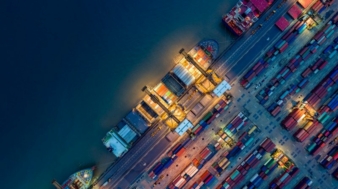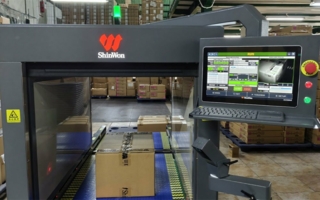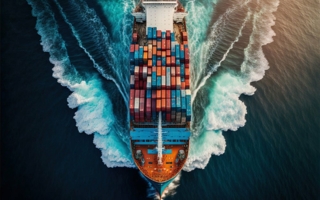12/08/2024 – Logistics — auf Deutsch lesen
Importers face high transportation costs from the Far East
Political tensions in the Middle East are driving sea container freight rates to their highest level in two years. This trend is unlikely to change in the short term.
These findings come from a study by credit insurer Allianz Trade. After falling for three consecutive months at the beginning of the year, freight rates have been on the rise again since May, reaching their highest point since August 2022. According to experts, the average rate for a 40-foot container has climbed to $5,901, which is a 121% increase from the start of the year and 297% higher than the same period last year.
Longer transportation time due to disrupted supply chains
Allianz Trade attributes the steep rise in freight rates primarily to the Middle East conflict, particularly the attacks by Houthi rebels on ships in the Red Sea. Patrick Merkel, Managing Director of Prologue Solutions in Hamburg, concurs: “Ships are forced to take a long detour around the southern tip of Africa, disrupting supply chains and extending transportation times. Additionally, many ships are currently fully booked, containers are unevenly distributed, and some ports are operating at full capacity,” Merkel explains.
An analysis by Bochum-based IT specialist Setlog highlights the impact of these disruptions. According to the study, textiles and other fast-moving consumer goods from the Far East were in transit for an average of 47.8 days in the first half of this year, which is 12.2 days longer than in the same period last year. The experts analyzed transport times in detail between 18 Asian ports 2 and western ports, from the ship’s departure to its arrival at the central warehouse. Setlog’s sample included 50 brands from the fast-moving consumer goods sector.
Optimized process prevents the worst
Setlog’s experts noted that the delay could have been even greater if many importers hadn’t adapted to schedule changes made by shipping companies and freight forwarders. “Leading companies are working closely with all partners, digitizing supply chain management, and utilizing planning and SCM software,” says Ralf Duester, Managing Director at Setlog. The data also indicates that companies optimized their onward transportation, reducing the average time from 5.9 to 4.9 days during the period under review. “This one-day reduction was mainly achieved by strategically switching to earlier unloading ports and different modes of transport,” Duester explains.
The Setlog data also reflects the current state of the consumer goods industry in Germany: Unit sales in the first half of the year were 15.8% lower than in the same period last year. “This decline is largely due to weakening consumption in Germany and the EU, but also marginally due to shifts in production towards Eastern Europe, Turkey, and North Africa,” says Duester.
Political unrest causes higher freight prices
The trend in sea container freight rates is reminiscent of the situation during the Covid-19 pandemic, though the causes are different: Back then, increased online purchases drove transportation prices up partly because there were not enough container ships available. High oil prices caused freight rates to soar in 2022.
In 2024, energy costs are not the main driver of rising freight rates; instead, political unrest is the key factor. Increased global trade also plays a role in the price trend, though Allianz Trade experts emphasize that this accounts for no more than 15% of the rates.
Shipping companies profit from the situation
Shipping companies are the primary beneficiaries of the current situation, with their earnings prospects improving over the past three months. Experts believe shipping companies are leveraging the situation to keep prices artificially high. “For the past four weeks, rate development in the Asia-Europe transportation sector has stagnated and, in some cases, even declined. This indicates that the peak season is over. There is still a backlog, but it should be largely cleared by mid-September,” explains Patrick Merkel. It remains to be seen whether shipping companies can maintain high prices. “Most have already announced that they will continue their blank sailing programs, canceling planned voyages or port calls, until the end of September.” Merkel underscores that political crises are aiding the shipping companies’ strategy. “If the Middle East conflict is resolved and Houthi rebel attacks cease, prices will drop sharply,” Merkel predicts.





